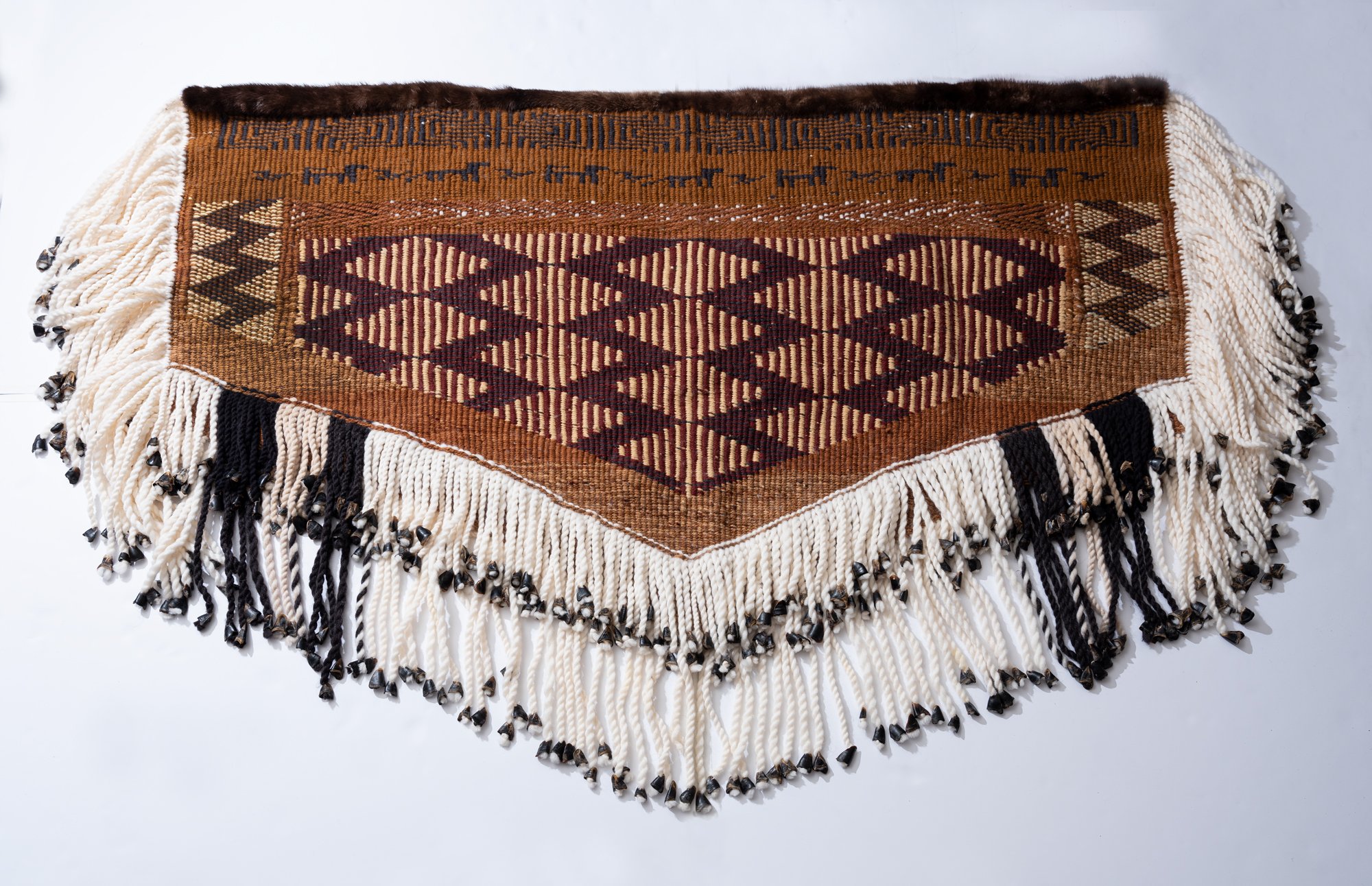Andrea Wilbur-Sigo
Andrea Wilbur-Sigo lives in Shelton, Washington, where she was born in 1975 and is a member of the Squaxin Island Tribe and of the SteChess family. She is the granddaughter of Bert and Arline Wilbur and Dennis Allen, great-granddaughter of Andrew and Betty Peterson, and great-great-granddaughter of Henry and Alice Allen, of which Henry was one of the major historical and cultural informant for an ethnographic study of the Twana and Salish people.
Andrea is the first known native woman carver of many generations of carvers. She grew up with many types of art around her. She started out with beadwork and has since learned the Coast Salish art forms, including bentwood boxes, welcome figures, house posts, masks, panels, button blankets, twine, twill weaving, and baskets weaving. Her artistic life began at the age of three, surrounded by an artistic community that included elders such as her Kia Louisa Pulsifer, Emily Miller, Georgie Miller, Great Grandfather Andrew Peterson, Aunt Bertha Visser, and her grandfather Bert Wilbur. She has recently worked with well-known master carvers such as Loren White, Susan Point, Pete Peterson, Joe and George David and Dempsey Bob. Andrea is continually researching and applying her knowledge to her art forms today. Andrea did her first show in December 1997, then in May 1998 she participated in the First Annual Indian Art Northwest show in Portland, Oregon where she took 1st place and Honorable Mention. Andrea has continued to place in every show thereafter. In 2006 Andrea attended the Heard Museum Show for the first time and took first place in her division. She also took best of show and People’s Choice at the first Annual Native art show, which took place at the Tacoma History Museum. In 2007 Andrea once again took People's Choice at the second Annual Native art show in Tacoma, Washington. Several years later 2016, she attended the “International Salish Wool Weavers Symposium” that was held in Suquamish, WA, and she took 1 st place and Peoples Choice with her fully twined blanket that was made for her daughter’s graduation.
Andrea is an active member of her tribe, volunteering her time and artwork for several community events, including being an active member of the tribal museum board. She also teaches Coast Salish art classes on a regular basis to children and adults of all ages for many of the local tribes.
Excerpts from a conversation between the artist Andrea Wilbur-Sigo and the curator on August 24th, 2022
Tell me about these weavings.
“I have one shawl that is my daughter MistiFawn Vigil it was made for her high school graduation, and it was fully hand-dyed with all natural materials. She was the first one to graduate from high school in our family and college. My daughter who this blanket was made for graduated from Evergreen and is now working on her last couple of credits to get her Master's degree. The other blanket is my son’s, who graduated about six years ago from high school. His is a fully twined blanket with a fishnet design and also has otter fur and stars that represent the phosphorus in our water. It is also fully hand-dyed. It was dyed with cedar that came off of a job I was doing at Suquamish. A big spindle whorl that I created for them, and I took the chips that I had carved off of it and dyed his blanket with it.”
Why was it important for you to weave something for your children’s graduation?
“Me and my siblings did not graduate from high school, nor did my parents. So my kids were going to be the first ones to graduate from high school. Part of what I do as an artist, in general, is to try to educate people on what I’ve been taught. What has been passed down from my elders. And part of that is the fact that, yes, button robes have become very important to our community, and they have their own set of meanings that I have watched grow tremendously. Our Salish design work which I have had my hand at teaching and educating, northern vs. Salish, which is here. But there is one aspect that, at one time, we didn’t have button blankets. We had woven blankets. So when my kids were really little, I always said, you will be the first ones to walk down in a woven blanket. I kind of put that out there as a challenge. In our school district of Shelton-Mason County, when they graduate, they get to wear their robes as they graduate in the ceremony. As I watched them get older and older, sure enough, I started a year in advance to make sure they were going to walk with their blanket. It was an agreement my kids and I had. This is what you get, you do your job, and I’ll do mine. And with that, it was breaking the cycle of not graduating, getting an education. Bettering themselves and doing something that nobody can take from them.”


